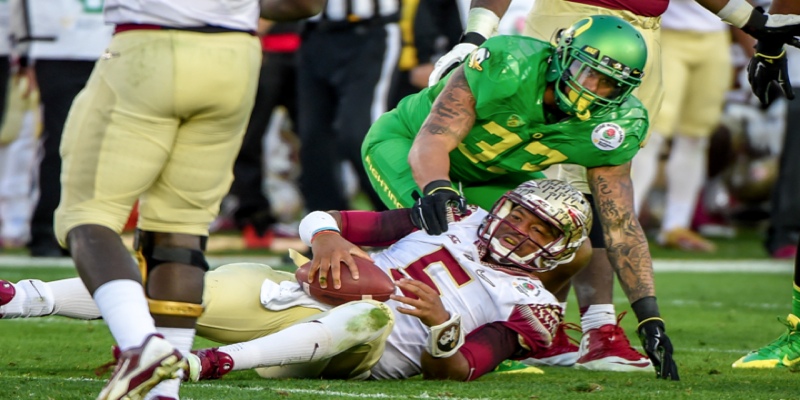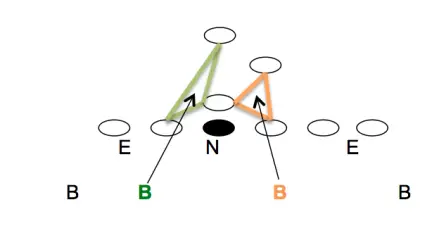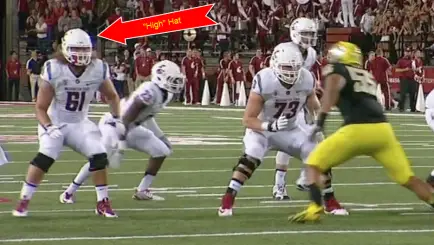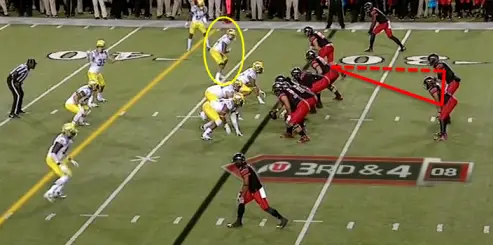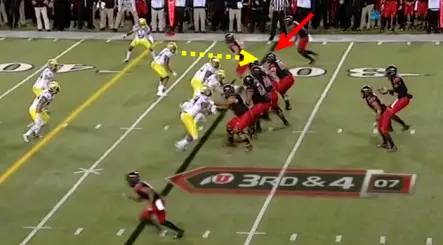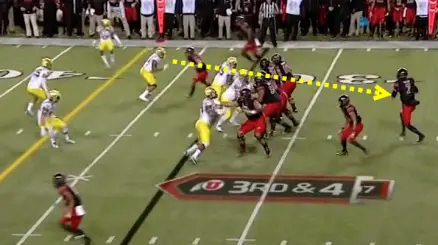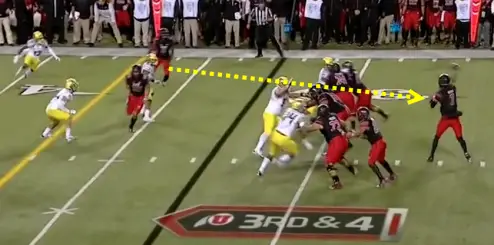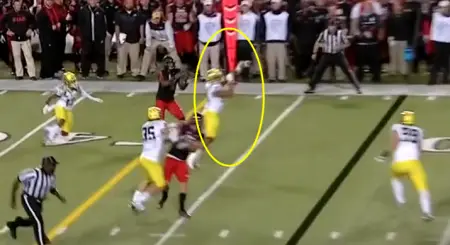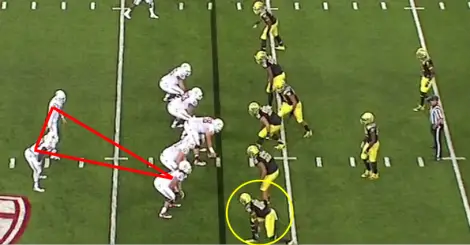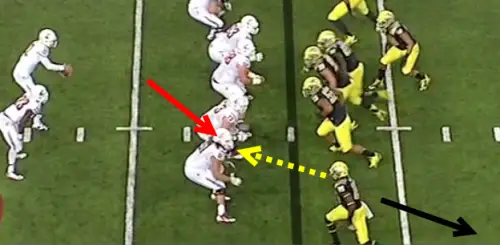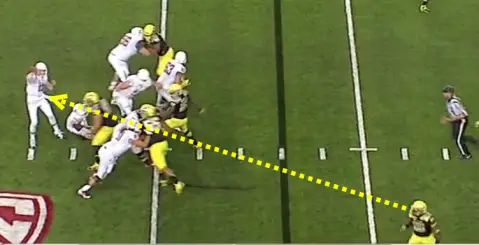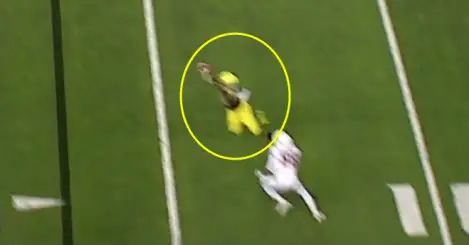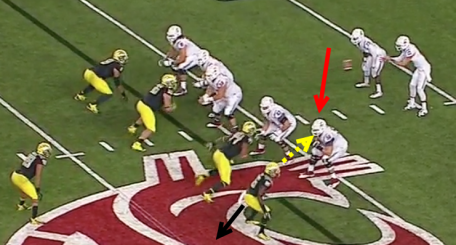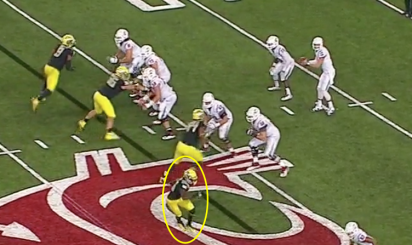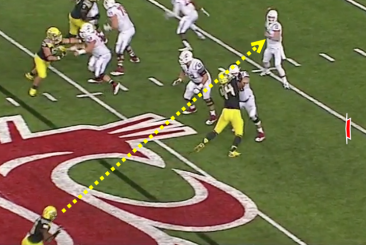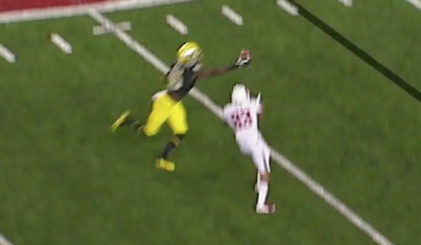In my last analysis, I took a look at the linebacker position, giving some thoughts on why backer play was inconsistent in 2014 and why I believe it will be better in 2015. In that analysis, I discussed how linebackers are taught to “read” keys to help them diagnose and react to the play.
Let’s quickly review these reads and how they fit into the “Triangle Read” concepts.
Linebacker Reads Review
The triangle concept is based on the concept of teaching the linebacker to focus on three points of the offensive formation as the play develops. Last time I talked about a common triangle for inside linebackers involving (1) the near guard, (2) the near back, and (3) the quarterback.
There can also be other “triangles” to read. For instance, a common triangle for an outside linebacker would be (1) the near tackle, (2) the near back, and (3) the quarterback.
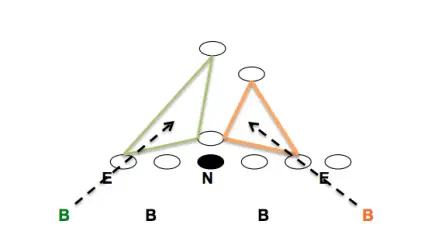
The image above illustrates possible triangle read keys for outside linebackers against a Strong-I formation.
As before, the read should start with the offensive lineman, and then progress into the backfield based on the initial read.
1. Reading the Near Lineman
The first read involves assessing the offensive lineman’s helmet height. In most cases, a “low” hat gives a run read and a “high” hat gives a pass read.
2. Reading the Near Running Back
If the linebacker gets a run read from the lineman — he sees a “low” hat — he will shift his focus to the near running back.
3. Reading the Quarterback
If the linebacker gets a pass read from the guard or tackle — he sees a “high” hat — he will shift his focus to the quarterback.
Reading the QB
Once the linebacker reads the “high” hat and gets the initial pass read, he shifts his focus to the QB and begins to execute his drop into coverage. Some of the things the linebacker is looking for when reading the quarterback are footwork, drop depth, the start of the throwing motion, and the quarterback’s eyes. These will all help the linebacker determine what the QB will be doing with the ball.
If the QB takes a three-step drop or sets up quickly, the backer should be looking for quick pass patterns like slants, drags, quick outs, and the occasional seam route. If the quarterback takes a deeper drop such as five or seven steps, the backer should be looking for deeper pass routes from his man (in man coverage) or any potential receivers attacking his zone (in zone coverage).
Obviously, at this the point, the linebacker must also be aware of receivers and understand how the coverage they are playing dictates his actions. A common coverage for a 3-4 defensive scheme such as Oregon’s is Cover 4 or Quarters Coverage.
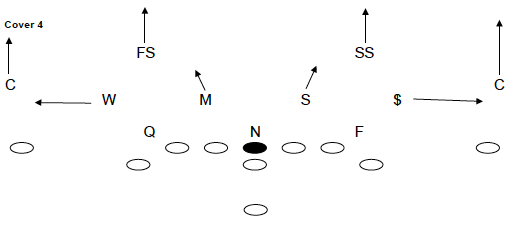
In a basic Cover 4 coverage, 3-4 inside linebackers are responsible for the hooks and drags, while outside linebackers play the curl-flat area.
Once the quarterback sets up in the pocket and begins his throwning motion, the linebacker can then make additional reads to ascertain where the ball will be thrown and make a potential play on the ball.
Film Breakdown
Clip #1
In the clip above, we see outside linebacker Tyson Coleman splitting the difference between the end man on line of scrimmage and the No. 2 receiver on his side. His triangle is the offensive tackle, the tailback, and the quarterback.
Once the ball is snapped (above), Coleman reads the offensive lineman’s helmet height and gets a “high” hat read — indicating a pass play.
We see the linebacker’s eyes shift into the backfield to get a read on the quarterback, who is beginning to set his feet — indicating a quick pass. Coleman is also aware of the No. 2 receiver who is currently in his zone.
Coleman gets his hands on the No. 2 receiver (above) and continues to read the QB. As the QB sets up to throw, Coleman reads the QB’s position and eyes.
Coleman passes the No. 2 receiver off to the inside linebacker (above) and begins to widen into the flat as the QB begins his release.
Coleman’s reads allow him to be in a position to make a play on the football. In this case, he bobbles the ball multiple times but ultimately comes up with the pick.

Great recognition!
Clip #2
In the screen caption above, Oregon linebacker Torrodney Prevot lines up on the line of scrimmage, threatening to be an edge rusher.
As the ball is snapped, Prevot makes his initial read on the offensive tackle and sees a “high” hat.
Prevot makes his drop and shifts his read to the backfield in time to see the quarterback throwing the football while under pressure from the pass rush.
Prevot (above) uses the information from his reads to put himself in position to make a play on the football and break up the pass.

Close to a pick!
Clip #3
Once again, we see Prevot lined up on the line of scrimmage, this time in a three-point stance. Placing the linebacker on the line of scrimmage does three things for the defense:
- It puts the linebacker in a stronger position to defend the run.
- It helps obscure the coverage.
- It makes the QB’s reads more difficult
While Prevot is lined up as a defensive end, his responsibilities are that of a linebacker, so he will be reading the triangle.
Above, as the ball is snapped, Prevot gets a “high” hat read from the offensive tackle — indicating a pass play. In this case, this means that the linebacker needs to drop into his zone.
We see Prevot dropping into coverage. At this point, due to his alignment, he needs to get into position before he begins to read the QB.
We see that once Prevot had gotten deep enough, he immediately gets his eyes in the backfield. The QB has already started his throwing motion and Prevot can see the ball will likely be thrown into his zone.
Again, with the information from his reads, Prevot makes a play on the ball (above) and nearly comes away with an interception.

So close again!
Practice Drills
Here are a few videos showing how coaches drill some of the pass drop techniques seen above. Obviously, the read will tell you what to do, but you still have to be able to physically do it.
LSU Drills
NDSU Drills
USC Drills
Final Thoughts
In the last analysis, I noted that Oregon linebacking was inconsistent in 2014. I also indicated that I believe Oregon’s linebacking unit will be much improved for the 2015 compaign. In watching more film, I still believe this and think I have shown that this unit is capable of doing great things come September.
It is just a matter of continuing to build upon their foundation and capitalizing on the athleticism they have on the field. I am certainly looking forward to seeing how they will grow and respond to new challenges.
I may be in New York, but…oh, how we love to learn about your beloved Ducks!
Coach Levi Steier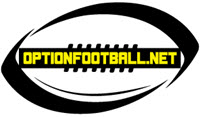
Albany, NY
OptionFootball.net
Feature Photo by Craig Strobeck
Levi Steier, (Football Analyst) after a collegiate playing career cut short by injuries, began his coaching career as a student assistant at Dakota State University. Since then he has coached primarily at the high school level. During this time he has been a head coach and has coordinated all three phases of the game. He is currently the owner of a web design business and the publisher at OptionFootball.net where he discusses many aspects of football, but regularly focuses on option oriented football topics. Coach Steier enjoys talking football and encourages anyone who would like to discuss the game or find more information to visit his site. You can follow Levi on twitter @OptionFootball, on his Facebook page and on Google+.

